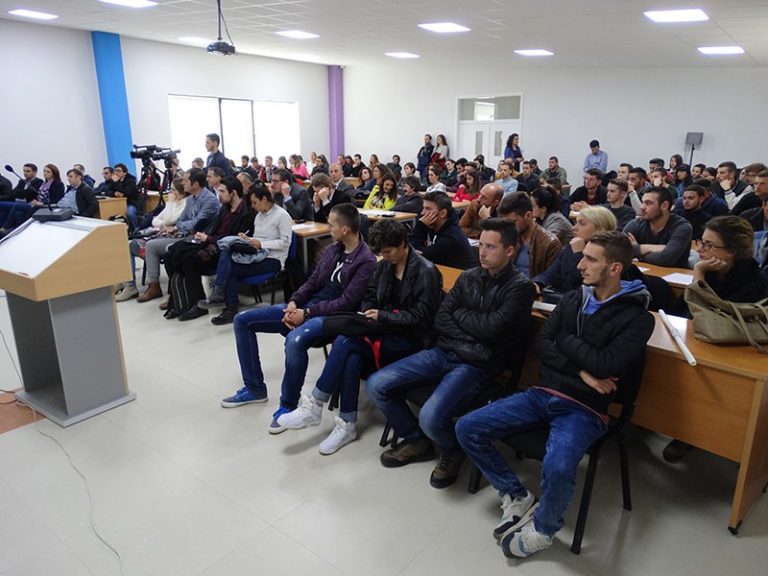
Conference “Austria-Kosovo Architecture Day 2015” Held at UBT
05/11/2015In the series of conferences treating topics of interest for the students, lecturers, experts, local and central institutions of the Republic of Kosovo, and institutions and universities from Austria and other countries of Europe, the UBT and the Austrian Kosovo Society have organized a conference on architecture in Kosovo.
Representatives of the government of the Republic of Kosovo, those of the local government, associations of professional architects from the country and region, experts of architecture, students, and other interested audience, attended the debates.
Mr. Liburn Aliu, Director of Urbanism at the Pristina Municipality, treated a number of issues related to the architecture and urban planning in the country’s capital. Aliu said Pristina was a city that led in promoting changes in the country and a city of high dynamics whose youth never agreed with the bitter reality, therefore they strived to change it.
“Pristina will be a place where changes are initiated and carried out. However, the changes that we are speaking about today have to do with another aspect, the urban one,” Aliu said, noting that one of the major challenges of Pristina today is to cope with the consequences of how the city was developed and expanded.
Its development and expansions, especially in the post-war years, has was based on profit — not for the citizens but different companies, businesses, businessmen, and merchants of land. Profiteering, not the interest of the citizens, was the main interest, he said.
Criticizing the way the city of Pristina was expanded, Mr. Aliu referred to an analysis that will be published soon, which, if carried out appropriately, it should serve as an urban development plan of the city that would provide for Pristina to have space and conditions to accommodate 2.5 million residents. However, he noted, a number of bad activities have taken place, including huge transaction of land and privatization to meet the interest of the owners but not the interest of the citizens.
In this context, he explained that one of the major problems that Pristina was facing was expropriation of the privately owned land to build roads whereby in most of the cases the cost of the land was many times higher than the cost of the roads or other projects. As a consequence, there will be less and less space for the citizens and less green areas, he said.
UBT Rector Prof. Dr. Edmond Hajrizi recalled that the first school of architecture at the UBT was launched in cooperation with partners from Austria and that was a huge contribution to the filed. “Together with the Austrians at the Faculty of Urban Planning, we organized the master courses in urban planning in Kosovo, a field where a lot had to be done but this was made possible through cooperation with the Austrian professors,” he said . He noted that a lot needs to be done in the field of architecture and urban planning, not only in Pristina but in the whole country.
Mr. Hajrizi also spoke about other issues, including cites of cultural heritage, their cataloging and digitalization, which was started but has not been finalized. He said the issue of competences is a problem in Kosovo, with incompetent people taking the role of professionals in fields they are not experts of.
Mrs. Karoline Jaeger Klejn made a presentation on the cultural heritage in Kosova and the efforts by her and her students to help in preserving that heritage and advocating in favor of this bid.
Dr. Lulzim Beqiri, Dean of UBT’s Architecture, elaborated on the role of the universities in creating and educating young architects, noting that professors and certified architects have needed to convey their complex knowledge to the students. He said tin the current situation in the country, a society in transition, architects just like other professionals face many obstacles and difficulties.
Eljesa Surdulli, chairwoman of the Kosovo Association of Architecture also spoke at the conference. She elaborated on the work of association, including its activities locally and internationally.
Other panelists treated different aspect of the topic of discussion, which were followed by fruitful debate. Many students of architecture and other departments showed interest in the debates.